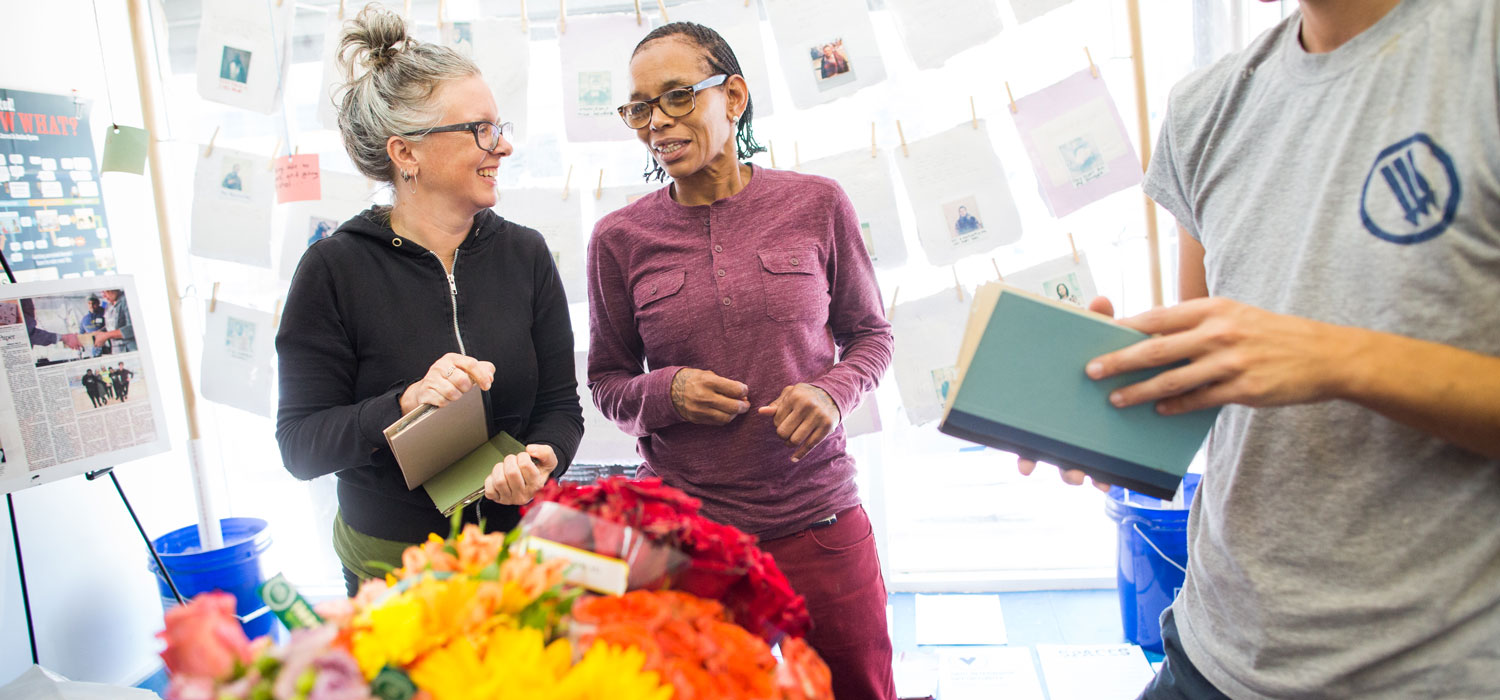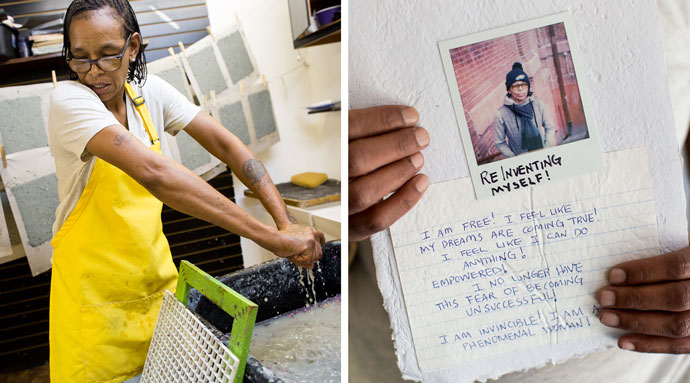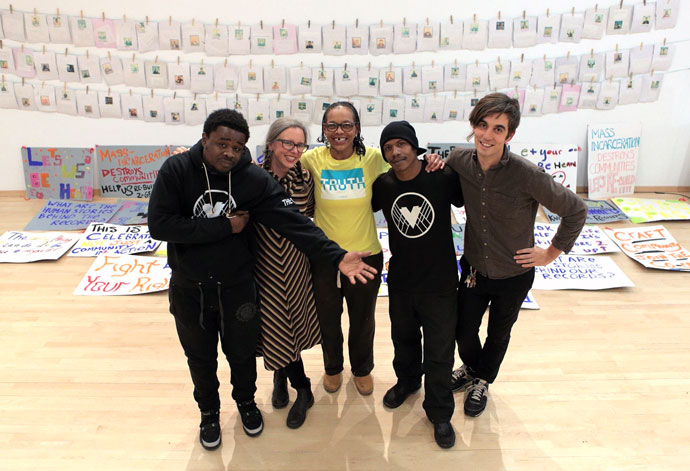
A key challenge in improving community safety is establishing trust, whether it’s trust among diverse groups of people living in a neighborhood or between a community and institutions like law enforcement.
The role that place can play is crucial to building trust: place is the physical environment and built landscape where people engage with, enjoy, and learn from one another. But by reflecting inequities and social tensions, places can also divide people and communities.
Practitioners working on community safety have increasingly incorporated creative placemaking techniques into their work. Creative placemaking refers to the ways in which arts and culture change how people use the places they share.
Creative placemaking incorporates “traditional” arts-related efforts like murals, music, sculpture, and dance, but it can also refer to place-based efforts that promote entrepreneurship, use space in novel ways, and creatively engage government and law enforcement, the private sector, community organizations, and residents.
To better understand how creative placemaking can enhance community safety and to inform others interested in working in this space, the Urban Institute studied four creative placemaking efforts, examining their design, implementation, challenges, and successes:
- The Beerline Trail and ARTery extension, which bridges two economically and socially disparate communities in Milwaukee, Wisconsin
- The People’s Paper Co-op, an effort to use arts as a vehicle for reform for people reentering the community from prison or jail in Philadelphia, Pennsylvania
- Eden Night Live, a community festival and pop-up marketplace sponsored by the sheriff’s department in Alameda County, California
- The Marcus Garvey Youth Clubhouse, a collaboratively designed and programmed space for young people in Brooklyn, New York

The People's Paper Co-Op. Photo courtesy of Annie O'Neill.
We found that creative placemaking can help turn boundaries (edges where things end) into borders (edges of interaction). Such interactions are crucial to community safety. Simply creating a plaza is no guarantee that people will show up, especially if that plaza is in a space of conflict. This work requires careful siting, programming, and community investment. The four cases in our study attempt to turn boundaries into borders.
The Beerline Trail and ARTery extension
This project created a connection between two adjacent communities: Riverwest, a diverse and economically vibrant neighborhood in Milwaukee, and Harambee, a low-income, majority African American neighborhood. This trail incorporates a previously unused railway into a recreational and programmed space designed to bring people together.
The project includes public art showing the history of the two neighborhoods, events featuring local artists and entrepreneurs, and an ongoing collaborative and inclusive process around design, implementation, and planning. In a context where inequality and concerns about gentrification are written into the area’s landscape, the trail was built around the idea that it can promote sustainable and inclusive development for both communities.
The People’s Paper Co-op
By promoting the voices and empowerment of formerly incarcerated people, the co-op helps build connections and pathways between returning people, their communities, and the criminal justice institutions in Philadelphia that they are working to reform and improve.

The People's Paper Co-Op.
Co-op members create art that highlights their experiences and promotes their efforts to improve their lives. By sharing this art, the co-op helps returning people find their place in the city, and it promotes shared understanding between those returning and other community members, the public, and policymakers.
Eden Night Live
This effort in Alameda County aimed to break down boundaries by creating a gathering space in a community with few public amenities and revitalizing it with local vendors and performers and by providing an opportunity for law enforcement and the community to interact with each other in a noncharged space, sharing the creative experience and participating in activities like dance parties and artistic performances, creating murals, rock climbing, and playing volleyball, soccer, and basketball.
Marcus Garvey Youth Clubhouse
In Brooklyn, the placement and programming of the Clubhouse was informed by a process that incorporated the voices of young residents. These people previously lacked a place to call their own within the Marcus Garvey apartment complex and had safety concerns about going to and using other spaces outside their immediate community.
The Clubhouse’s creation and programming—involving everything from site design and build-out to hosting skills-building workshops and other events—was a creative endeavor, accounting for the boundaries within the larger community and filling a need for people who were previously excluded.
Building empathy is one part of a broader need to identify inequities
Turning boundaries into borders is just one example of how creative placemaking can strengthen community safety efforts. By promoting shared experiences and building empathy, arts and culture can help people from different backgrounds and with different experiences better understand one another. But this work can also identify boundaries, inequities, and power dynamics that cannot be wiped away by a single effort.
Tune in and subscribe today.
The Urban Institute podcast, Evidence in Action, inspires changemakers to lead with evidence and act with equity. Cohosted by Urban President Sarah Rosen Wartell and Executive Vice President Kimberlyn Leary, every episode features in-depth discussions with experts and leaders on topics ranging from how to advance equity, to designing innovative solutions that achieve community impact, to what it means to practice evidence-based leadership.